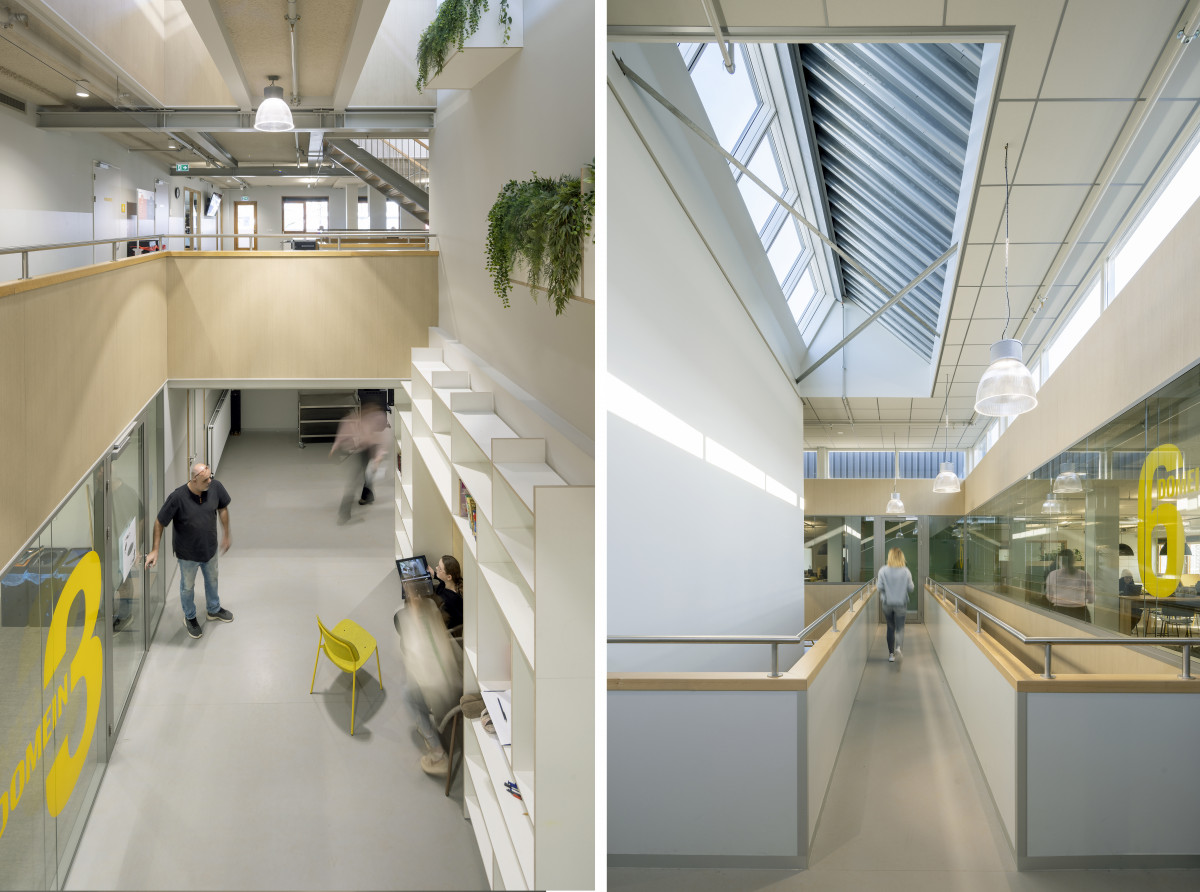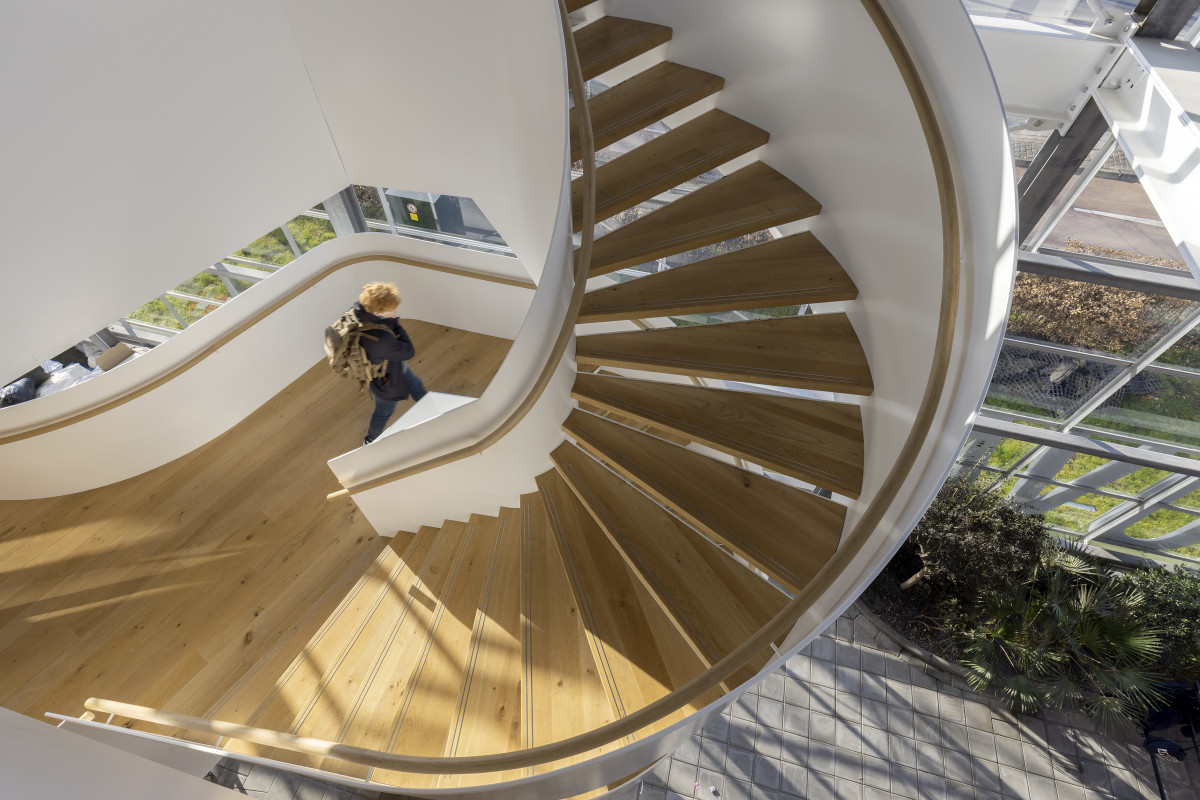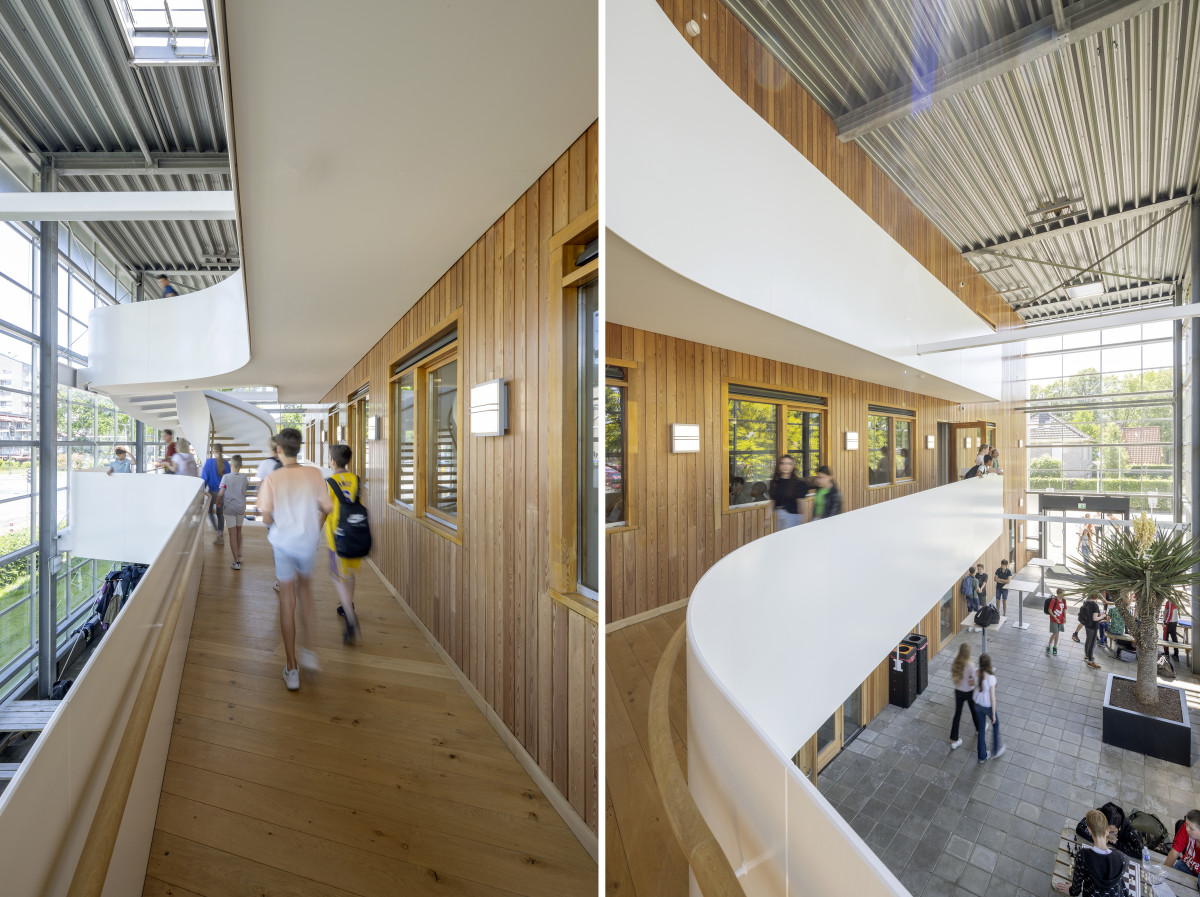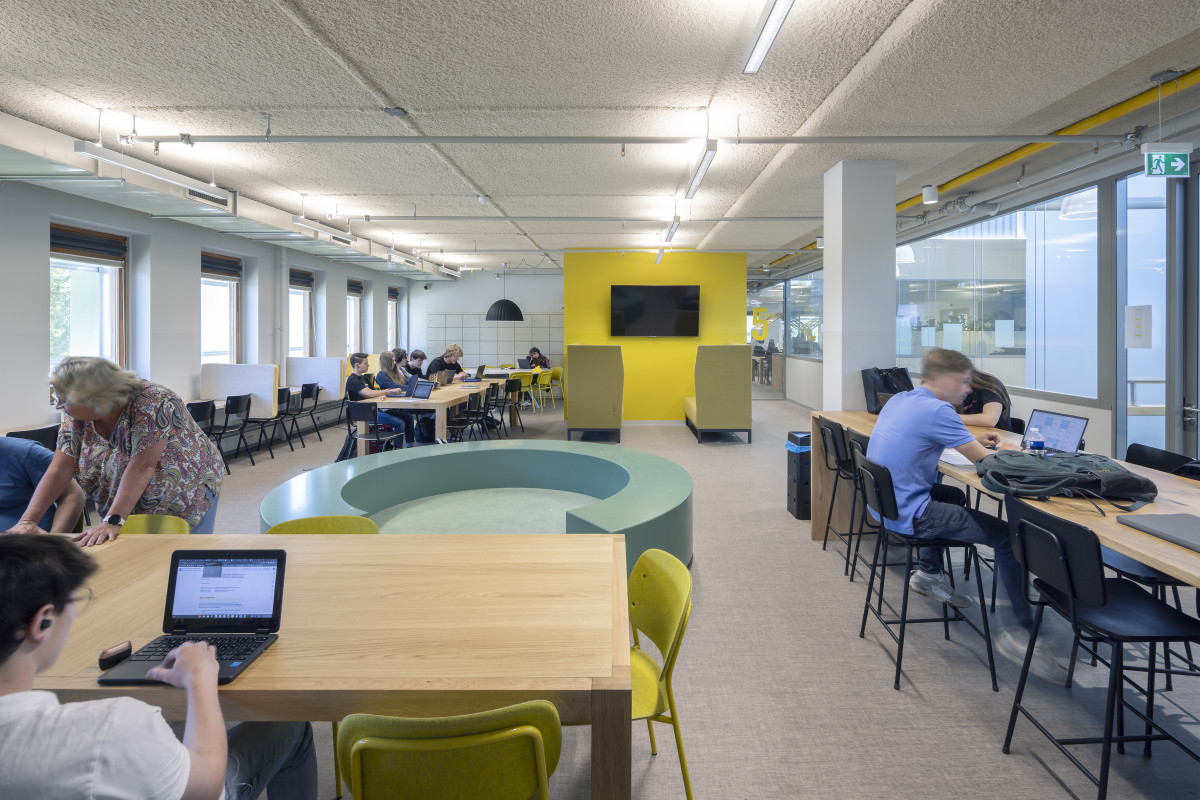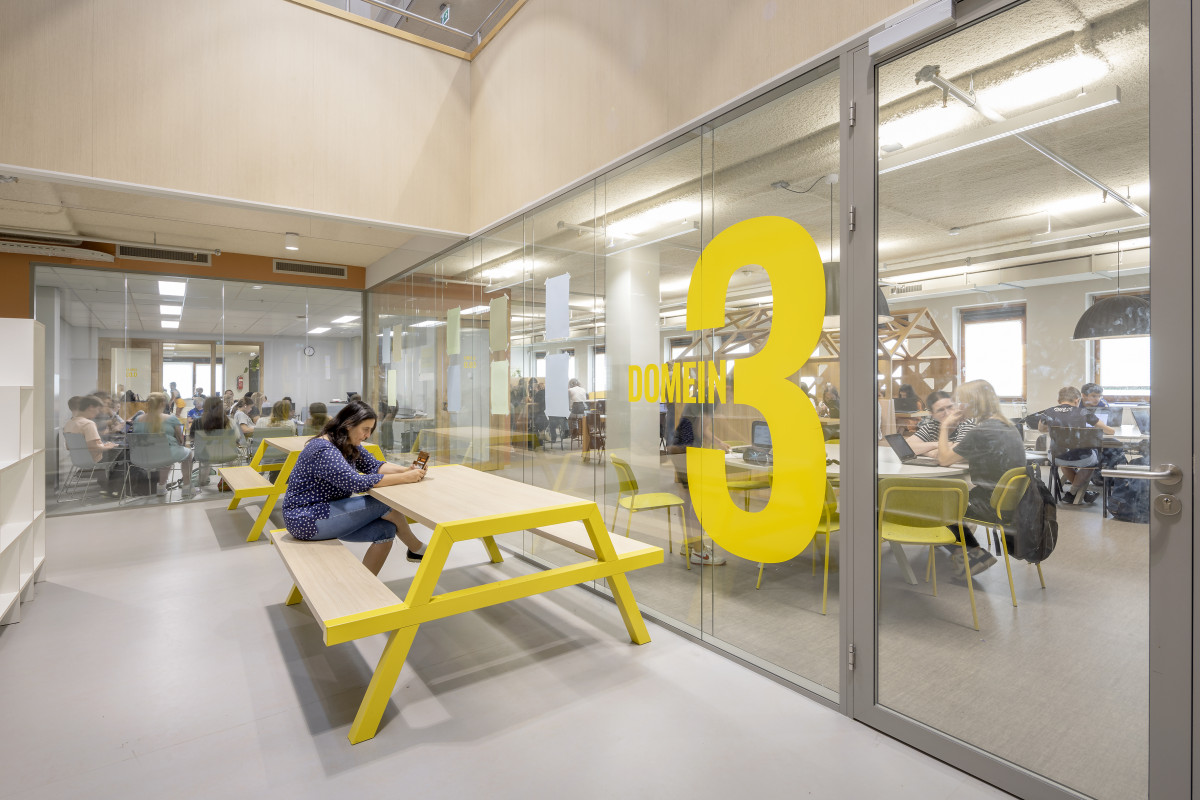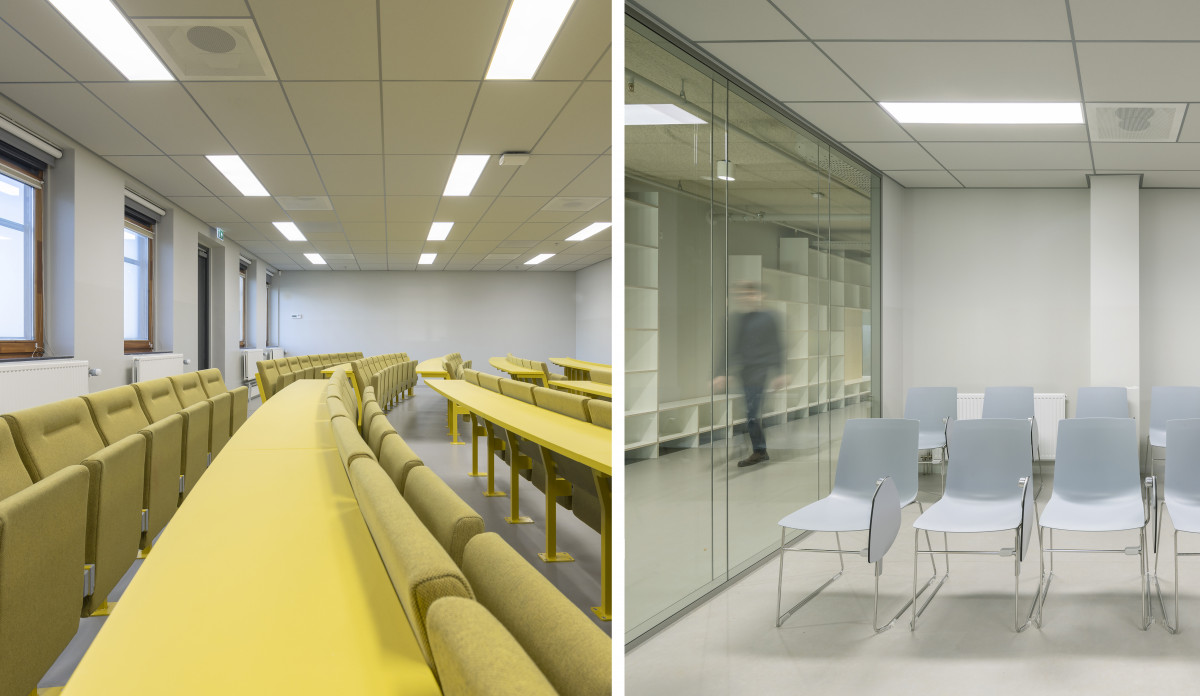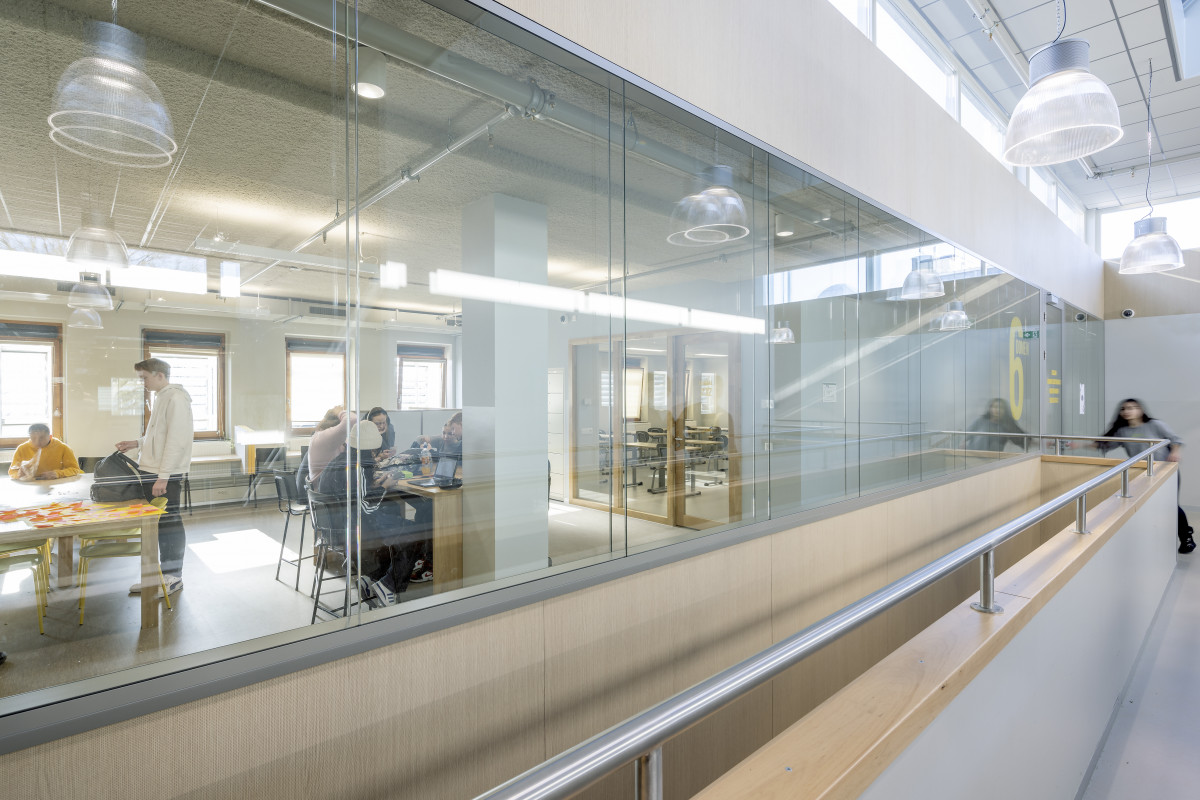For Het Stedelijk Innova, atelier PRO transformed an pre-existing building on the outskirts of Enschede into a compact, sustainable and one-of-a-kind secondary school. The Stedelijk Innova teaches according to the Kunskapsskolan method, an innovative learning concept that offers pupils a personalised education; this concept was decisive for our design.
From police station to secondary school
In 2020 atelier PRO was commissioned to transform the former Service Centre East in Enschede - which included a police station and a healthcare centre - into a secondary school with room for 550 pupils, for education at VMBO and junior HAVO level. However, the requirements for an office/police station are very different from those of a school: the existing building was deep, with low floor heights and a lot of small, enclosed spaces - and therefore not particularly suitable for education. The installation requirements also presented a challenge, due to the higher standard required for school buildings; in addition, the limited space called for a compact design.
An open and transparent building
After the transformation, the building now has an open and transparent layout. New openings in the floors complement the pre-existing skylight and allow daylight to enter deep into the building; to further increase this, we created a void in the centre of the building, which also serves as a 'spine'. Partition walls are executed in glass as much as possible. To retain a sense of height, no suspended ceilings were used in the learning domains; instead, the installations are light and have been kept in plain sight.
Kunskapsskolan
Het Stedelijk Innova uses the Kunskapsskolan method, a personal learning concept developed in Sweden. The method is based on the premise that every pupil is unique, with his or her own ambitions and talents; therefore, students have an individual timetable and their own coach. This educational vision calls for a fitting, made-to-measure design, with plenty of room for meetings, and with the possibility to use spaces in a versatile and flexible way. Central to the Kunskapsskolan method is the learning domain, an educational environment which facilitates different ways of teaching and working - instead of fixed classrooms per subject. In their learning domain, students can work independently, cooperate with others and present their results; the learning domains are complemented by classrooms where vocational teachers can give instructions, with lecture halls, lab rooms, a cafetaria and a (school) library.
Campfire, Cave and Watering Hole
The concept behind Het Stedelijk Innova does not call for traditional classrooms; instead, it requires different types of spatial ‘settings', depending on how students learn and/or work - Campfires, Caves and Watering Holes. Campfires are theatre-like spaces, where students can gather around an expert who tells a captivating story; Watering Holes are spaces where students can work together on projects and learn from each other, and Caves spaces where students can retreat to study with focus.
A helical staircase as an eye-catcher
A remarkable school like this calls for a remarkable entrance. Therefore, we transformed the bare glazed hall into a welcoming triple-height lobby with a helical staircase as an eye-catcher. The spiral staircase contrasts with the pre-existing larch panelling; together with the new reception area, it provides a clear transition between inside and outside. The staircase also ensures that students automatically arrive on the first floor, where school-wide meeting areas can be found - and so also acts as a 'signpost' to the heart of the school.
The first floor as the heart of the building
The first floor houses a number of large meeting area’s - one of which also serves as the cafeteria - but also lab rooms for Physics, Biology and Chemistry. In addition, there is a dedicated space for special education. The ground floor and the second floor accommodate the learning domains of the lower and upper school levels respectively, with three learning domains per floor, and related support rooms for lessons. The layout of the various learning domains matches the different types of education and the age of the pupils.
Graphic design concept
Throughout the building, we made extensive use of natural materials, creating a warm atmosphere. Where it was called for, we also created areas with a bolder look and feel and stronger contrasts, or with more muted shapes and colours. The domains are defined by a distinct use of colour and materials: more subdued in the lower school, more pronounced in the upper school. This creates a building in which all pupils have a place that fits them personally - just like the education provided by Het Stedelijk Innova.
Sustainability
For Het Stedelijk Innova, we re-used an existing building to the maximum extent, so as to give it a second life. The building was outfitted with new installations, which not only leads to gains in terms of sustainability, but also ensures a good living and learning climate. Minor interventions have led to a maximum result, and transformed a vacant office into a school - making this a very timely project.
Collaboration
atelier PRO was commissioned by Het Stedelijk Lyceum, a large comprehensive school which operates on multiple locations. We designed the building from the Sketch to Definitive Design phase, and were responsible for the redevelopment, the integration of the programme and the interior. Local firm BCT Architects took care of the technical supervision after the Final Design phase, and of the implementation during building. The close collaboration between both offices, together with the client, users and other parties involved, ensured the final, exemplary result: an innovative and sustainable secondary school.



